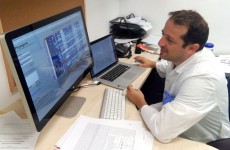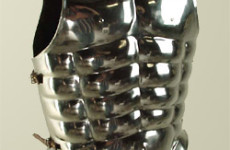The Nobel Prize in Chemistry 2013 was awarded jointly to Martin Karplus, Michael Levitt and Arieh Warshel “for the development of multiscale models for complex chemical systems”.
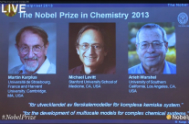 On Wednesday, October 9, 2013, the Royal Swedish Academy of Sciences announced the the three professors, Arieh Warshel, Michael Levitt, and Martin Karplus had been awarded the 2013 Nobel Prize in Chemistry. Of the 23 chemistry Nobels awarded in the past decade, 11 of the winners were Jewish and six of them were Israelis.
On Wednesday, October 9, 2013, the Royal Swedish Academy of Sciences announced the the three professors, Arieh Warshel, Michael Levitt, and Martin Karplus had been awarded the 2013 Nobel Prize in Chemistry. Of the 23 chemistry Nobels awarded in the past decade, 11 of the winners were Jewish and six of them were Israelis.
The Academy stated that:
“Chemists used to create models of molecules using plastic balls and sticks. Today, the modelling is carried out in computers. In the 1970s, Martin Karplus, Michael Levitt and Arieh Warshel laid the foundation for the powerful programs that are used to understand and predict chemical processes. Computer models mirroring real life have become crucial for most advances made in chemistry today.
Chemical reactions occur at lightning speed. In a fraction of a millisecond, electrons jump from one atomic to the other. Classical chemistry has a hard time keeping up; it is virtually impossible to experimentally map every little step in a chemical process. Aided by the methods now awarded with the Nobel Prize in Chemistry, scientists let computers unveil chemical processes, such as a catalyst’s purification of exhaust fumes or the photosynthesis in green leaves.
The work of Karplus, Levitt and Warshel is ground-breaking in that they managed to make Newton’s classical physics work side-by-side with the fundamentally different quantum physics. Previously, chemists had to choose to use either or. The strength of classical physics was that calculations were simple and could be used to model really large molecules. Its weakness, it offered no way to simulate chemical reactions. For that purpose, chemists instead had to use quantum physics. But such calculations required enormous computing power and could therefore only be carried out for small molecules.
This year’s Nobel Laureates in chemistry took the best from both worlds and devised methods that use both classical and quantum physics. For instance, in simulations of how a drug couples to its target protein in the body, the computer performs quantum theoretical calculations on those atoms in the target protein that interact with the drug. The rest of the large protein is simulated using less demanding classical physics.
Today the computer is just as important a tool for chemists as the test tube. Simulations are so realistic that they predict the outcome of traditional experiments.”
Warshel stated that his research was motivated by his own personal curiosity, which eventually led the development of “a method that allowed us to understand how proteins actually work.”
Warshel explained that it was like seeing a watch, wondering what was going on inside of it, and finding out. “We developed how a computer can take the structure of a protein, and can understand how it does exactly what it does — for example digesting food…you want to understand how it is happening, and then you can use it to design drugs, or in my case, to satisfy your curiosity.”
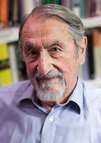
• Martin Karplus, U.S. and Austrian citizen. Born 1930 in Vienna, Austria. Ph.D. 1953 from California Institute of Technology, CA, USA. Professeur Conventionné, Université de Strasbourg, France and Theodore William Richards Professor of Chemistry, Emeritus, Harvard University, Cambridge, MA, USA.

• Michael Levitt, U.S., British and Israeli citizen. Born 1947 in Pretoria, South Africa. Ph.D. 1971 from University of Cambridge, UK. Robert W. and Vivian K. Cahill Professor in Cancer Research, Stanford University School of Medicine, Stanford, CA, USA.
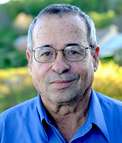
• Arieh Warshel, U.S. and Israeli citizen. Born 1940 in Kibbutz Sde-Nahum, Israel. Ph.D. 1969 from Weizmann Institute of Science, Rehovot, Israel. Distinguished Professor, University of Southern California, Los Angeles, CA, USA.



